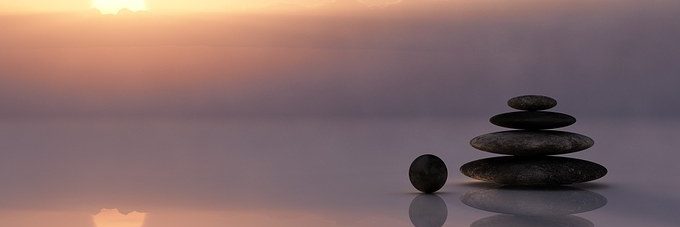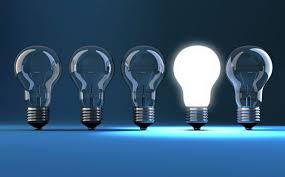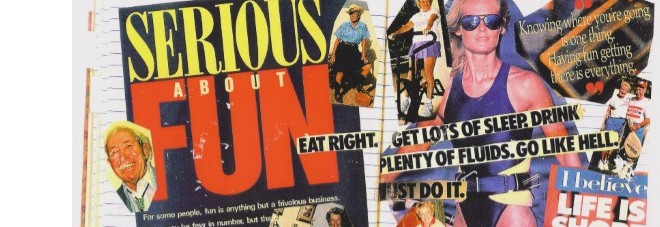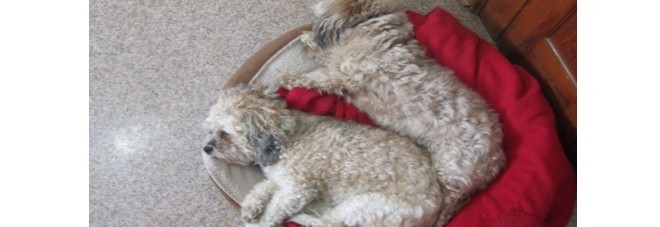Life Balance Begins at Home

July 4, 2016 | Posted in Leading Hartfully, Living Hartfully, Wealthy Woman | By Gaia Hart
Life balance is vitally important to your happiness, success, and health. There is considerable evidence showing that mishandled stress at home interferes with work performance, and mismanaged on-the-job pressures create or magnify problems at home. Other research shows that the quality of personal relationships strongly influences job productivity, disease resistance, and longevity. Evaluating your various roles in areas of your life and attaching a level of priority to each is another important step toward making more intelligent decisions on where to put your time and energy.
Providing time for Leisure Moments in our lives, helps increase our resilience to stress, helps improve self-confidence and self-esteem, our physical fitness, and mental alertness. Often, when we take time out to re-create, refresh, and renew, we feel more in control of our lives which helps lower stress levels. When was the last time you went out and played to recharge your batteries?
Humor and laughter can build a healthy heart. Cardiologists at the University of Maryland studied 300 participants, half with healthy hearts and half with heart disease. Those with heart disease were 40% less likely to see humor in situations based on a survey and were more hostile and angry than those with healthy hearts. You can test your healthy sense of humor with their survey at http://www.umm.edu/news/humor.html . Another study of 240 heart-attach survivors found those who laughed at comedy videos every day were less likely to suffer a second heart attack during the course of a year. Based on an article by Allen Klein, the Jollytologist, in the Association for Applied and Therapeutic Humor Newsletter.
Many workers believe that the supportiveness of their boss is an important factor in determining their attitude or outlook at work. Nearly 61% rated this factor as extremely important, while 26% rated the supportiveness of their boss as somewhat important. When choosing a workplace, 87% sought out a place that is understanding of their personal and family needs. Only 4% actually sought out employers who are strict about attending to family needs, while 9% found employers who appear to be unaware of family needs as reported to Careerbuilder.com. Being content at work is a big part of having a balanced life. Take stock of where you work and with whom you work and if it’s not working for you, find something that will.
Things About Energy, Empowerment, and Employee Retention that Make You Go Hmmmm

March 4, 2016 | Posted in Leading Hartfully, Living Hartfully | By Gaia Hart
Work-life programs are keeping workers at work and experts are attributing fewer sick days to these programs. With more flexibility to arrange their schedules and more workplace help with dry-cleaning, day-care, and car washing; workers aren’t as tempted to take “mental health days”. According to a CCH, Inc. survey of absenteeism, it declines to 2.1% as compared to 2.7% last year and 2.9% in 1999. Absenteeism costs companies more than $600 per employee per year which translates to $9000 for a 15-person operation or $3 million for a 5,000 employee organization. Research shows that only 40% who call in are really sick – the other 60% are taking care of personal business.
* According to www.realage.com, laughing can make your “real age” up to 8 years younger.
* What steps does your organization take to help keep workers at work by offering some conveniences or assistance for staff so they can handle life’s responsibilities? Some organizations: have a car detailing service 1-2 times per week in the parking lot, have a corporate concierge who arranges to meet plumbers or the cable guy at a worker’s home while the worker stays at work or makes dinner reservations or arranges for concert tickets, have a dry-cleaning operation on site, have pet-care centers, have arrangements for eldercare options, have a massage therapist come on site for breaks, or have take-home dinner options available from the employee cafeteria.
* The National Association of Colleges and Employers reports that 62% of recent college grads expect to leave their first job in 3 years. What will you do to retain your top talent when they come to you with this expectation?
I wanted to share some energy boosting tips to improve your personal energy and keep stress at bay:
- Spend time deep breathing to oxygenate the body.
- Get fit in bits – even bursts of 10 minutes three times per day will help.
- Mind your posture and stand or sit straight to help your diaphragm and aid in deep breathing, it is also less fatiguing on your back.
- Sit properly with your knees at right angles and feet and back flat. Pat attention to your chair or elevate your feet to help your back – stretch and move often if you sit at your desk for long periods.
- Get outside for fresh air and sunshine.
- Learn to use acupressure points to release more energy doors for better energy flow throughout the day.
- Practice yoga for body movement and breathing techniques – it helps relax you, tone and strengthen muscles, and add flexibility to aid in energy flow.
- Laughing reduces stress hormones and invigorates the circulatory system, the respiratory system, and muscles throughout the body. Contrary to popular belief, it does not release endorphins, but it does have other healthy effects.
- Dance and since for physical and emotional release.
- Rest with intensity – get plenty of sleep nightly to rejuvenate and refresh.
- Eat smaller meals and eat more frequently to keep your blood sugar stable and your metabolism on track to help balance your energy levels.
@ EASE – Ideas to Organize, Recognize, and Energize

July 4, 2015 | Posted in Leading Hartfully, Living Hartfully | By Gaia Hart
Quick and easy ideas for you to optimize your work and your life to live and lead Hartfully.
1. Skip lunch at your desk and take a walk outside to munch lunch while sitting in the fresh air. Start a walking club and pick your dream vacation spot and walk the mileage it takes to get there.
2. Replace your stuffy plaques with photos or posters which inspire you or afford a mental get-away.
3. Take turns bringing in creative treats to work on Friday.
4. If you have flextime, change your schedule according to the season for a change of pace.
5. Have a staff baby photo contest – the winner gets to leave an hour early.
6. Schedule more 3-day weekends to give yourself a break instead of putting all your vacation time in one spot. Our energy soars as we look forward to something special. Plan special things on Mondays to start your week out with higher energy.
7. Send thank-you notes to staff or customers who were particularly helpful or kind. Send notes home to staff spouses or parents telling them how terrific their partner or child is and thank them for their support.
8. Schedule a massage therapist to visit your office for seated massages during a particularly stressful time (budgeting cycles, end-of-month inventory) to decrease stress and increase productivity and well-being.
9. Conduct fewer meetings, remove the chairs to ensure they will be shorter, use email or conference calling, make meetings more fun and personable with surprises to keep people interested. People learn more when they are having fun.
10. Listen to books on tape, soothing music, or motivational tapes as you drive to work to make use of commuting time. Residents around the Washington DC area spend an average of 82 hours per year stuck in traffic…what are you doing to help increase your energy as you drive?
Enter: Enter Each Day on a Positive Note, Not Alarmingly

September 23, 2014 | Posted in Leading Hartfully, Living Hartfully | By Gaia Hart
Research has shown that those who wake up with a jolt to an auditory-assaulting alarm start out their day agitated. Add in the usual frantic rush to get out of the house and we get weary before we get to our destination. We often run on the temporary burst of energy from adrenaline or the stress hormones produced in the fight or flight response, instead of authentic, long-term energy.
Compare that frazzled episode to awaking on our own to our body’s natural rhythms after a good night’s rest, or to pleasant music with plenty of time for morning activities, most of which has already been prepared the night before. Ease into your day, start off on the right foot, and make the first hours as pleasant as possible. If you must use an alarm, try a Zen Alarm clock that starts out very quietly and grows to a slightly louder volume or an alarm that has other soothing sounds of soft music or nature.
Try listening to calming music instead of the morning news, taking a morning walk to clear your head, and plan the day sipping herbal tea on the deck, or practicing yoga to start off in the right frame of mind. Gulping coffee, slamming down a donut and dashing out the door combing your hair is no way to feel good about yourself. Ingesting caffeine causes our body to run like an engine revving to 70mph in second gear. It will move, but it’s not natural and it can’t keep up that pace without negative repercussions.
To get a jump on stress, ditch the coffee and the caffeine that has been found to elevate your blood pressure throughout the day and into the night. Caffeine exaggerates the stress response and the affects last for 8-10 hours. Stress hormone levels were double that of those who were not ingesting caffeine in one study done at DukeUniversityMedicalCenter. If you must sip a hot beverage, try herbal tea, green tea with its anti-oxidant factors, or rooibos tea which has even more anti-oxidant power than green tea and both have much less caffeine than coffee to avoid the highs and lows that coffee can bring on. Decaffeinated teas are also available. Make sure to look for those brands that are naturally decaffeinated and not chemically decaffeinated for the most healthful choice.
There are numerous studies about the positive affects of these teas such as helping us fight against cancer and preventing heart disease by helping lower our cholesterol. Why not try sipping hot water with lemon instead of coffee to help cleanse your system. Another great starter is an energy shake made with fruit, yogurt, tofu, milk, wheat germ, and juice to get your protein, carbs, fruit, fiber, and dairy in your system in an easily digestible form.
CTRL – Control Your Life and Your Immediate Environment

July 12, 2014 | Posted in Leading Hartfully, Living Hartfully | By Gaia Hart
Take control of your immediate circle of influence. You don’t always have control over what comes your way, but you have the power to control your state of mind and reactions to whatever life hands you. When you change your mind, you change your energy, and when you change your energy, you change your life. Our thoughts turn into actions and our actions turn into habits and our habits turn into our character . . . so what are you thinking about?
You can also control your immediate physical environment. Give yourself an energy boost by hanging up cherished photos, or have a nice rug under your feet, play soft instrumental music to soothe your nerves, and have your space make a positive statement about who you are. What image do you want to portray with your space. Is it working for you or against you? Take control of your immediate environment whether it be your space, your thoughts, or your circle of friends. Our clutter is a symptom of our internal chaos – a visual of postponed decisions and procrastination. Is your environment telling others you have control or that you’re out of control? Take control over what you have the power over and let go of things that are out of your control to avoid undue energy drainage.
Escape: Escape for a Mental Health Break

April 24, 2014 | Posted in Leading Hartfully, Living Hartfully | By Gaia Hart
Physically fleeing the scene of stress for a holiday restores personal energy. Sometimes all we have is a “holimoment” where we can purposefully escape into daydreams or meditation if we can’t physically escape to take a break. Americans lag far behind most of the world in reaping the rewards of longer vacations and time to escape the real world responsibilities.
Employers in Europe know the secret to having employees be refreshed, renewed, and recharged for more productivity is taking longer or more frequent holidays. Europeans average five weeks per year holiday time as compared to the paltry American two weeks annual vacation. If you are saving up those vacation days, or worse yet, losing them because they have expired, you are doing yourself, your family, and your colleagues a disservice by not giving them the best you can be at optimum performance levels.
We need a break to clear our minds and re-connect in order to perform at peak performance at other times. If you must hang around the office, surround yourself with items that bring back good memories or that state your affirmations boldly. Take a mental health break by gazing at your memorabilia while you wait on hold on the phone. (Research suggests we are on hold an average of 15 minutes/day or 60 hours/year). Fresh air and movement do wonders, as do office toys or a personalized treasure map of things you want to accomplish in your life.
Treasure maps are collages of pictures and words representing your desires, goals, or affirmations. These posters filled with cut and past magazine photos and headlines are a physical and mental reminder of what’s dear, and act as a magnet to attract you closer to your goals and aspirations. The more you use the powerful force of visualization; the imagery of your dreams becomes imbedded into your subconscious and you start behaving in a manner to elicit responses to move you towards your image. There have been numerous studies of athletes and performers using guided imagery and visualization to help them compete and win. When you start imagining the possibilities and show your brain concrete images, it sends your body signals to help make that image materialize.
Travel can generate excitement, adventure, intrigue, and other awesome feelings all rolled up into one package. Experience other cultures and new ways of life, or just get out of town for a weekend escape. We need this time for creative renewal in order to be our best to meet our challenges. Seeing how other cultures live gives us a fresh perspective on what may be out of kilter back home. Flexibility and an attitude of discovery go a long way in creating positive travel experiences. Where are you going next?
F2: Fun & “F”ectiveness to Improve Your Energy

April 16, 2014 | Posted in Leading Hartfully, Living Hartfully | By Gaia Hart
Fun and effectiveness combine to increase peak performance. Put the FUN back into functional by using unique, everyday items such as color-coded file folders, bubble pens, calligraphy pens instead of typing labels, photos of loved ones, stress toys, humorous recognition cards/awards/coupons, and cartoon calendars. Learning and productivity are enhanced when fun is mixed with effectiveness to generate a creative and enjoyable environment for children and adults alike. It is a proven fact, work made fun gets done and good times lead to good business. Just like sports figures, we can’t sprint non-stop all day and expect to have any energy left over. We must mix in our fun with our effectiveness for peak performance.
Workers are like cows; we produce more when we are content. Many surveys cite having fun as a top workplace motivator. World-class athletes and entertainers also mention fun as a key factor in the success and enjoyment of their work. Fun is an attitude – seek out the humor in your daily life and cultivate an eye and an ear for humorous alternatives. What are you doing to add more fun into your life? Did you have fun things on your Ideal Day list that was your assignment in the last post? What new, fun things can you add to your life? What have you not yet tried? How can you make your work or your work space more fun? Ruminate on these questions to brainstorm how you can add more fun and effectiveness to your day. To help you keep energized, tune in to more blog posts.
Positive Psychology: What Happiness has to do With Your Personal Energy

April 10, 2014 | Posted in Leading Hartfully, Living Hartfully | By Gaia Hart
You may have noticed a theme here this year. I’ve decided to offer an alternating series on Happiness and Personal Energy. I’ve been researching, studying, living and making a living from educating others about how to improve both for their personal and professional lives as well as showing organizations how to improve both to beef up their bottom line. The two are intricately intertwined because a large majority of our energy is emotional energy. If our mindset is set on negativity, sadness, dark drama, emotional baggage and such; no matter how many energy inserts we add to our lives, we will still feel drained of energy.
The Positive Psychology movement gained a foothold about 20 years ago and it’s been a very interesting thing to watch this shift in the science of psychology. Martin Seligman, a Philadelphia psychologist is the father of the field of positive psychology and happiness. He began by asking “what if happiness was more than the absence of sadness and what if we could have a kind of psychology that focused on the positive instead of on the negative and what has gone wrong?”
Since that time, in January 2005 TIME Magazine ran a cover story on The Science of Happiness, then Fortune 500 corporations, the military, Harvard, the Federal Government and a growing mass of the public began to run with this theory. In 2010, Zappos CEO Tony Hsieh published his business memoir Delivering Happiness and it debuted on the New York Times Bestseller list at number 1. There is something to this happiness thing.
Contrary to what the Declaration of Independence says; happiness is not something we PURSUE, it’s something we DO…or rather an accumulation of the many little things we do every day. It’s HOW we decide to live our lives. One of the very best exercises I can share in pinpointing how to realize happiness in our lives is the Ideal Day writing assignment. I believe I’ve mentioned it before and it bears repeating because it is so powerful in its simplicity.
Find quiet time and get comfy to spend as long as you need to dream and visualize your Ideal Day and write it down in exquisite detail. Capture all the little things that bring you happiness such as fuzzy puppies, lush towels, down comforters, soothing smooth jazz music, fresh-squeezed pink grapefruit juice, 80% dark chocolate, cashmere…but I digress. Begin with when you wake up and move throughout your day and describe what your senses experience, what you do, how you do it and what your surroundings look like, sound like and feel like. Afterwards, do a gap analysis of your Ideal Day and your current life. What is missing? What can you easily insert into your current life from your Ideal Day? If you can’t focus on just one day. Do what I did and write down your Ideal Day for the Fall/Winter and one for the Spring/Summer because mine included skiing to sailing and I needed more than one day to capture it.
Next, look at your gap analysis and see what you already have in your current life from your Ideal Day? What can you celebrate? What do you have or what are you doing that already brings joy and happiness that you may be taking for granted? Often, we neglect to honor and enjoy certain things until we don’t have them. We think it’s just a normal thing. I’ve recently experienced this by having knee replacement surgery. Down for the count for several weeks with a walker and crutches and I knew immediately that mobility and absence of pain/vitality were things I didn’t savor nearly enough. Yep, being able to move through the world confidently that I won’t fall down is now on my list in my Ideal Day.
Once you find things from your Ideal Day that you don’t yet have; make a plan to be, do, have those things that would bring you joy and happiness and energy. When we are happier, we have more energy. Sadness brings lower energy. The research says that it’s not the big things that come around few and far between, it’s the smaller daily things that create the happiness. How you realize happiness and increased personal energy is by doing simple things and doing them often. Your assignment is to write down your Ideal Day. Your homework is then to make a list of what you already have or do from the Ideal Day and then make a list of what you can insert into your life from the exercise.
Meet me back here in a few weeks and get your next installment of the Happy Factor.
